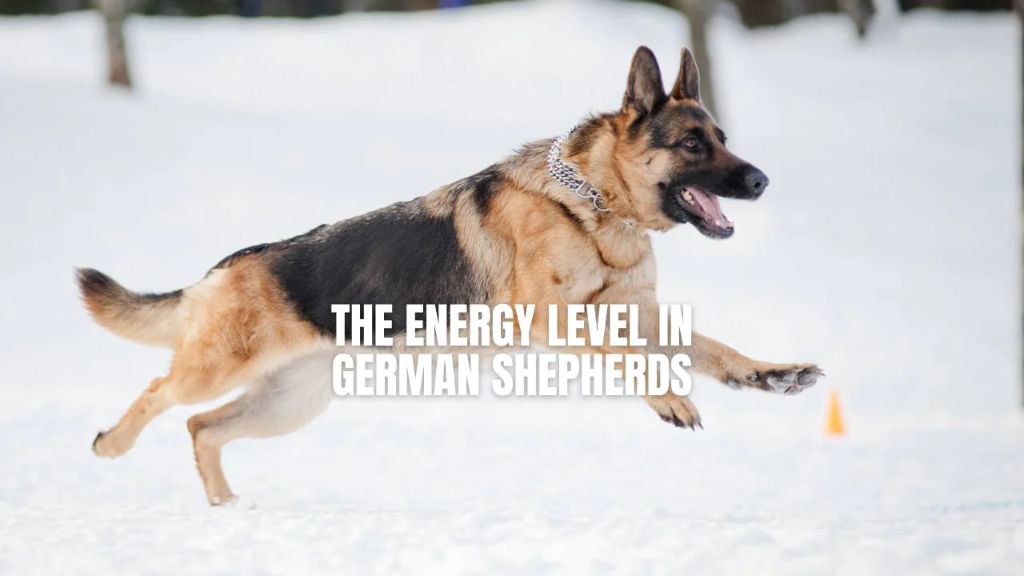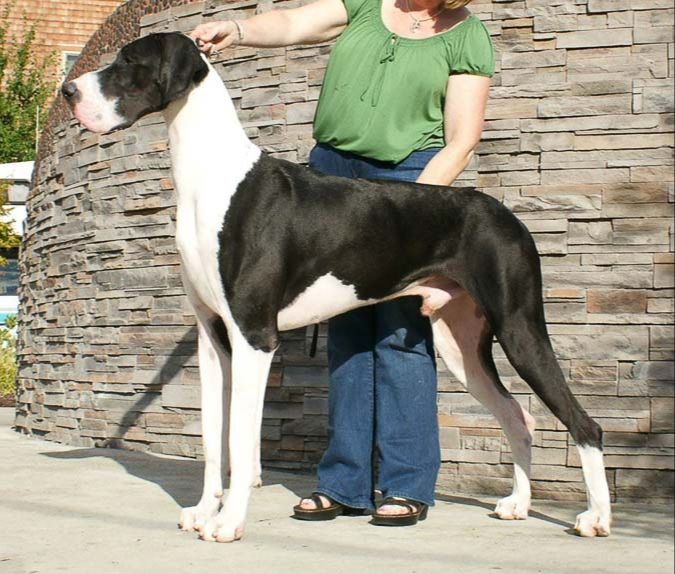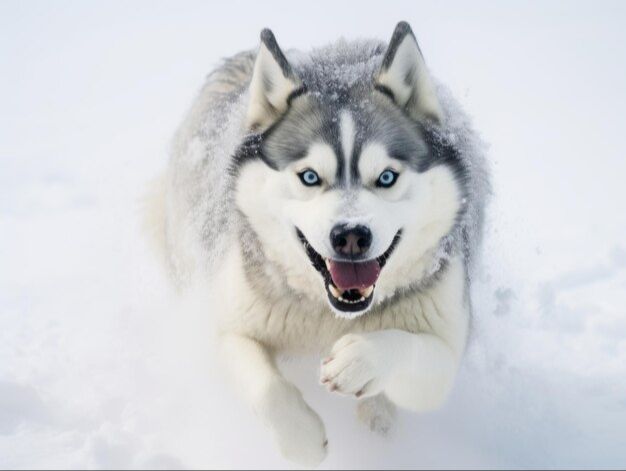German Shepherd: Traits, Temperament, And Characteristics
The German Shepherd breed originated in Germany in 1899. German cavalry officer Captain Max von Stephanitz is credited with developing the breed from traditional German herding dogs. His goal was to create a working dog breed that was intelligent, strong, and obedient. The breed was intended to be versatile, excelling as a herder, guard dog, and military working dog.German ShepherdGerman Shepherd Dog History: Origins of the Working Breed
The German Shepherd proved adept at a variety of jobs, including search and rescue, police work, disability assistance, and acting as loyal pets. Their courage, trainability, and strength make them excellent working dogs. German Shepherds rose to prominence in the early 20th century and remain one of the most popular breeds worldwide today.
Physical Traits
German Shepherds are a medium to large-sized breed. Males stand 24 to 26 inches tall and weigh between 65 to 90 pounds. Females stand 22 to 24 inches tall and weigh between 50 to 70 pounds (https://www.akc.org/dog-breeds/german-shepherd-dog/).
This breed comes in a variety of coat colors including black, black and tan, black and red, black and silver, black and cream, sable, blue, liver, white, and panda (extremely rare). The most common colors are black and tan or black and red (https://www.akc.org/dog-breeds/german-shepherd-dog/).
German Shepherds have a double coat – a dense, straight outer coat and a soft undercoat. They have erect ears and a long, bushy tail. Their gait is long, elastic, and unhurried, covering the maximum amount of ground with the minimum number of steps. They move powerfully yet effortlessly (https://www.akc.org/dog-breeds/german-shepherd-dog/).
Temperament
The German Shepherd is an intelligent dog with a loyal, protective nature. They are eager to learn and highly trainable, making them excellent working dogs. German Shepherds form strong bonds with their owners and family, and their courageous spirit makes them natural guardians (AKC).
Known for being highly intelligent, German Shepherds are often used as police and military dogs, roles that require quick thinking and bravery. Their intelligence also makes them excellent service dogs that can be trained for specific tasks. However, their intelligence means they require substantial mental stimulation and training to prevent boredom and unwanted behaviors (Petplan).
Loyalty and eagerness to please are hallmark German Shepherd traits. They bond closely with their family and aim to protect them. With proper socialization and training, the German Shepherd develops a calm yet courageous demeanor, ready to defend their loved ones if needed.
Energy Level
German Shepherds are extremely high-energy dogs that require plenty of exercise and activity (German Shepherd Shop). As puppies and adolescents, their energy levels seem boundless – they can play vigorously for hours on end. Without adequate exercise outlets, all of this pent-up energy can lead to destructive or hyperactive behavior.

Even adult German Shepherds need more exercise than many other breeds. On average, they require 60-90 minutes of high-intensity activity per day (PitPat). This could involve running, hiking, swimming, playing fetch, or other vigorous pursuits. Mental stimulation through training sessions and interactive toys is also important. Providing adequate physical and mental exercise will help keep a German Shepherd happy and well-behaved.
Trainability
German Shepherds are known for being highly trainable dogs that respond exceptionally well to positive reinforcement training methods. According to The American Kennel Club, “This breed’s high level of intelligence and strong desire to work makes them very trainable, which is one of the most appealing qualities of the breed.” Using positive reinforcement techniques like food rewards and praise taps into the German Shepherd’s eagerness to please their owner.
German Shepherd puppies can start basic training as early as 8 weeks old. Their high trainability means they can learn simple commands like “sit” and “stay” very quickly. With continued positive and structured training, a German Shepherd can master more complex skills and tasks. Their intelligence also allows them to be trained for specialized roles like service dogs, police dogs, and search and rescue dogs.
While highly trainable, German Shepherds do best with dedicated daily training time. Their energetic nature combined with their quick learning abilities means they thrive when given regular mental and physical stimulation. Keeping training sessions positive and rewarding allows German Shepherds to reach their full potential.
Common Health Issues
German Shepherds are prone to certain health conditions, including hip and elbow dysplasia, and gastric dilatation volvulus (GDV) or bloat. According to Forbes, hip dysplasia is a hereditary condition that is especially common in German Shepherds. It occurs when a dog’s hip socket doesn’t fully cover the ball portion of the upper thighbone, resulting in joint laxity. This causes pain and arthritis in the joints over time. Elbow dysplasia is similar, affecting the elbow joint. It is also a common issue in the breed.
Gastric dilatation volvulus, or bloat, occurs when the stomach twists on itself, trapping air, food, and water inside. This cuts off blood supply and can be life-threatening without prompt treatment, according to Purina. German Shepherds’ broad, deep chests make them more prone to bloat. Owners should be aware of signs like restlessness, drooling, and retching.
Grooming
German Shepherds have a double coat that sheds moderately throughout the year. Occasional brushing is required to remove loose hair and prevent matting. It’s recommended to brush a German Shepherd 2-3 times per week using a slicker brush, undercoat rake, and/or shedding blade [1]. More frequent brushing, such as daily, can be beneficial during heavy shedding seasons. A bath every 3-4 months with a mild dog shampoo is sufficient for most German Shepherds to keep their skin and coat healthy. Regular nail trimming, teeth brushing, and ear cleaning should also be part of a German Shepherd’s grooming routine.
Living Conditions
German Shepherds are adaptable dogs that can live in many different environments as long as they get enough exercise. While they can adapt to apartment living if properly exercised, they do best with access to a securely fenced yard where they can burn off energy (AKC).
German Shepherds need time outdoors and do not do well being kept primarily indoors. Access to a yard allows them to play, run, and explore at their own pace. However, yards should have a 6-foot fence that prevents climbing and digging under to prevent escapes (Dogtime).
While they can thrive in many home environments, German Shepherds do best with regular access to the outdoors to meet their exercise needs. Their high energy and working dog roots make confined indoor living a challenge.
Exercise Needs
German Shepherds require substantial daily exercise to stay physically and mentally stimulated. They tend to have high energy levels and were originally bred as working dogs, so they need more activity than some lower energy breeds.
Most experts recommend providing German Shepherds at least 60-90 minutes of exercise every day [1]. As puppies, starting with 5 minutes of exercise per month of age is a good rule of thumb and building up from there [2]. Adult German Shepherds need at least 60 minutes but ideally closer to 90 minutes of energetic exercise daily to stay fit and stimulated.
German Shepherds thrive on rigorous activities that allow them to run and get their energy out in an intense way. In addition to walks, combining high intensity exercise like hiking, running, cycling, playing fetch, or swimming helps meet their needs. Mental stimulation through obedience training or interactive toys is also important to complement physical activity.
Without adequate intense exercise, German Shepherds may become bored, restless, or destructive. Providing the high level of physical and mental stimulation this energetic breed needs is key to having a healthy and happy German Shepherd.
Conclusion
In summary, the German Shepherd is an intelligent, loyal, and versatile working dog breed. They are eager to learn and highly trainable, making them excellent service dogs, police dogs, and companions. Some key traits of the German Shepherd include:
- High energy and exercise needs – Require daily walks and playtime.
- Protective nature – Make good watchdogs who are wary of strangers.
- Trainability – Extremely intelligent and obedient when well-trained.
- Shedding – Need regular brushing to control shedding.
For owners, consistency is key when training a German Shepherd. Establishing yourself as the calm and confident pack leader will allow you to bring out their best qualities. Their strong working drive means they need a job to do, whether it’s learning tricks, playing fetch, or going on regular outings. With proper care and training, the German Shepherd can make for a loyal family companion and protector.






